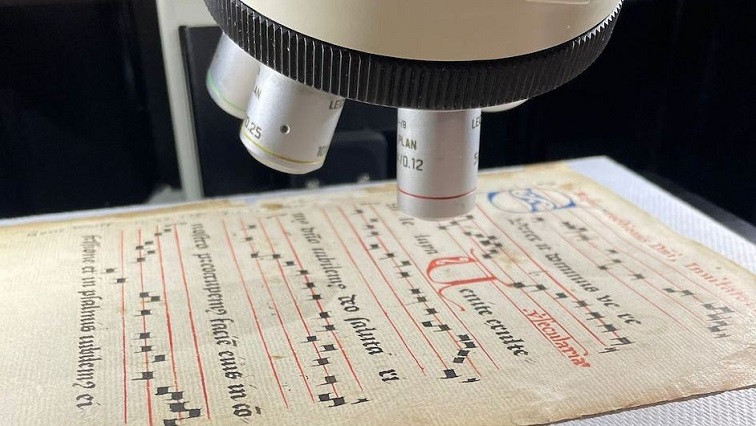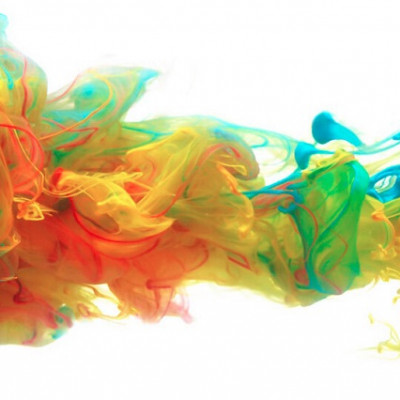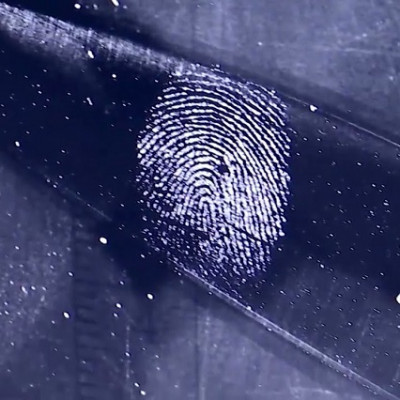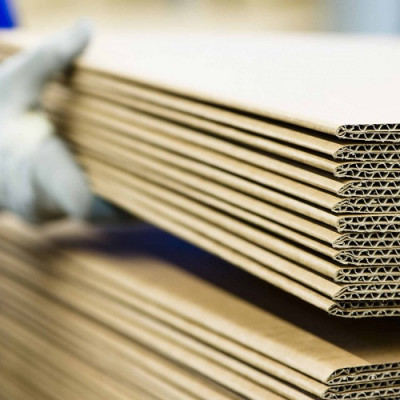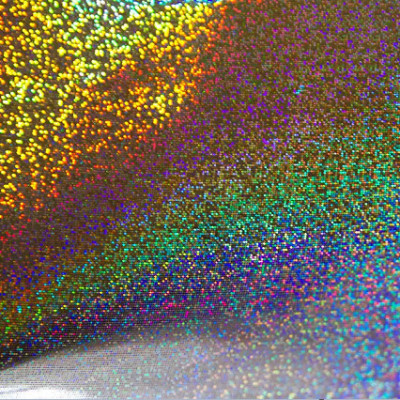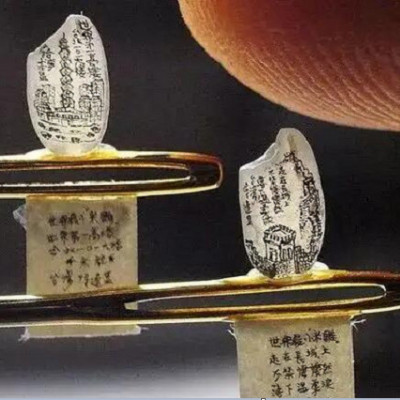Sometime in the late 15th century, a scribe, likely a nun living in what is today the Netherlands, meticulously wrote out a booklet of liturgical music, also known as an antiphonary, for use at special feasts. In Latin and Dutch, she noted instructions indicating which parts of the music should be sung by nuns of different ages and levels of seniority.
In the 17th century, the pages of the antiphonary, which had been in continuous use for about 200 years, were sewn together in a new order. By the 20th century, the antiphonary had made its way to the Union Theological Seminary’s collection, which the Columbia University Libraries acquired in 2004.
And last year, a team led by Alexis Hagadorn, head of conservation for Columbia’s libraries, set about using cutting-edge nanotechnology to inspect the work, which had fallen to pieces through the centuries, assess the ink on its pages, and put it back together.
That work was possible because of a years-long interdisciplinary collaboration between Columbia conservators and scientists at the Columbia Nano Initiative. The Initiative provides research services and grants, allowing more than 120 research groups and more than 420 users, mostly at Columbia but also outside it, to use the most up-to-date nanotechnology to conduct research. It also maintains a spirit of cross-disciplinary collaboration and a commitment to non-traditional projects that have been there since its inception in 2015.
“The Nano Initiative has always been looking for ways for researchers to collaborate, and we have a particular enthusiasm for unexpected, interdisciplinary projects with scholars from different fields, even outside of science,” said Nava Ariel-Sternberg, the Columbia Nano Initiative labs’ senior director.
This particular project—the analysis and re-assembly of the antiphonary, whose official name is UTS MS 114—was completed at the request of Susan Boynton, a professor of music who had analyzed its contents. That analysis led Boynton to identify details of interest to the scholarly community in the text, including the instructions that indicate the assignment of chants to nuns of different ages.
Abigail Slawik, an intern at the library who was completing her master’s in art conservation at the time, led the project under Hagadorn’s supervision. Their goal was to assess what ink the manuscript was written with, completely treat the manuscript to prevent deterioration, and then put it back into its 17th century binding. Boynton reconstructed the correct ordering of the contents, based on the organization of the liturgical year.
The Legacy of Columbia’s Ancient Ink Lab
Hagadorn was trained in how to use these technologies to decipher ink as a member of the Ancient Ink Lab, a research group founded by Nano Initiative co-founder James Yardley, a now-retired Columbia chemist. The lab, which operated from 2009 to 2014, used nanotechnology developed at Columbia to analyze inks used in manuscripts from the ancient world. The lab studied a variety of materials, including a fragment from the Egyptian Book of the Dead. It is one of several labs and ongoing research projects that eventually grew into the Nano Initiative. (Boynton knows James Yardley somewhat coincidentally, through his wife Anne, who specializes in the liturgical practices and manuscripts of medieval nuns.)
“Through that training, I became someone who could teach others how to use this technology,” Hagadorn said.
Since her time with the lab, Hagadorn has worked with a number of faculty members to use the Initiative’s technology to learn more about manuscripts. She recently collaborated with Katayun Barmak, a professor in the Department of Applied Physics and Applied Mathematics in the School of Engineering and Applied Science, on another such project. Together, they’ve investigated why manuscripts made with vermilion pigment, which is normally a vibrant, saturated red color, were slowly turning black, as well as assessing what led to the deterioration of paper-based manuscripts made with blue copper pigments.
Barmak’s students recreated historic ink recipes and then used those to replicate specific changes in the ink’s appearance to better understand why they were happening.
Conservators’ Uses for Nanotechnology
There are, broadly, two kinds of questions that conservators and their fellow researchers can use nanotechnology to investigate, Hagadorn said.
One type of question is the kind that historians ask, about what certain old written materials are made of and what that tells us about the people who were physically producing them. “Our collections are huge repositories of untapped data that hasn’t really been explored, and it’s important to do so because the producers didn’t record very carefully what they were doing, or didn’t record it at all,” Hagadorn said.
Nanotechnology can also be helpful in countering deterioration. “If we understand more why things are deteriorating, then we can prevent deterioration much more effectively,” Hagadorn said, and can also verify that the materials they’re using to restore materials aren’t accidentally driving further deterioration.
“The insights gained through the application of nanotechnology give conservators the information they need to keep the delicate paper of this manuscript from deteriorating further,” said Boynton. “Next year, my seminar on liturgical manuscripts in the Columbia University Libraries will include consultation of the rebound and stabilized antiphonary.”
How Technology Reveals a Manuscript’s Secrets
For the antiphonary project, Hagadorn and Slawik, her intern, used the Nano Initiative’s Raman spectrometer. The Initiative’s spectrometer is routinely used by Columbia scientists to examine two-dimensional materials like graphene, an ultrastrong form of carbon that was discovered at Columbia, said Philippe Chow, the director of the Nano Initiative’s Shared Materials Characterization Laboratory, which houses the spectrometer. But every once in a while, researchers like Hagadorn use the technology.
The Raman spectrometer that the group used works by illuminating the ink samples with a single-wavelength laser. When the laser light hits the ink, some of its energy is lost due to vibrations of the ink’s atoms. The extent of the energy loss is detected by the spectrometer, which generates a graph that allows users to identify what materials are in the ink. “It’s sort of like a fingerprint,” Chow said.
When they examined the antiphonary, the conservators found what they expected: The work was made primarily of black iron gall ink, the most commonly used ink of the era in Western Europe, with added accents of red vermilion and blue azurite.
“We suspected we were going to find what we found,” Hagadorn said, “Still, it’s another bit of data that adds to the body of knowledge that people can draw from.”
Read the original article on Columbia University in the City of New York.

